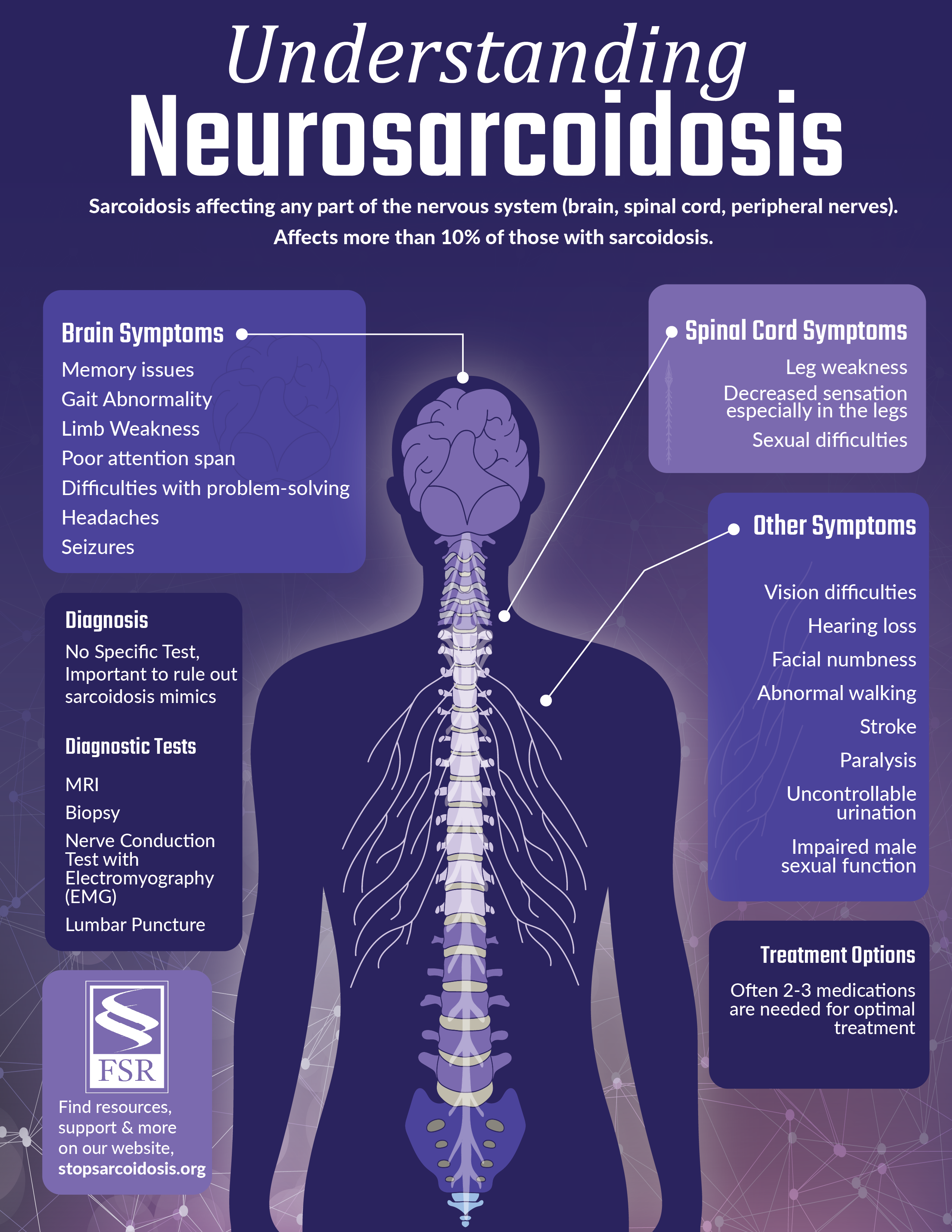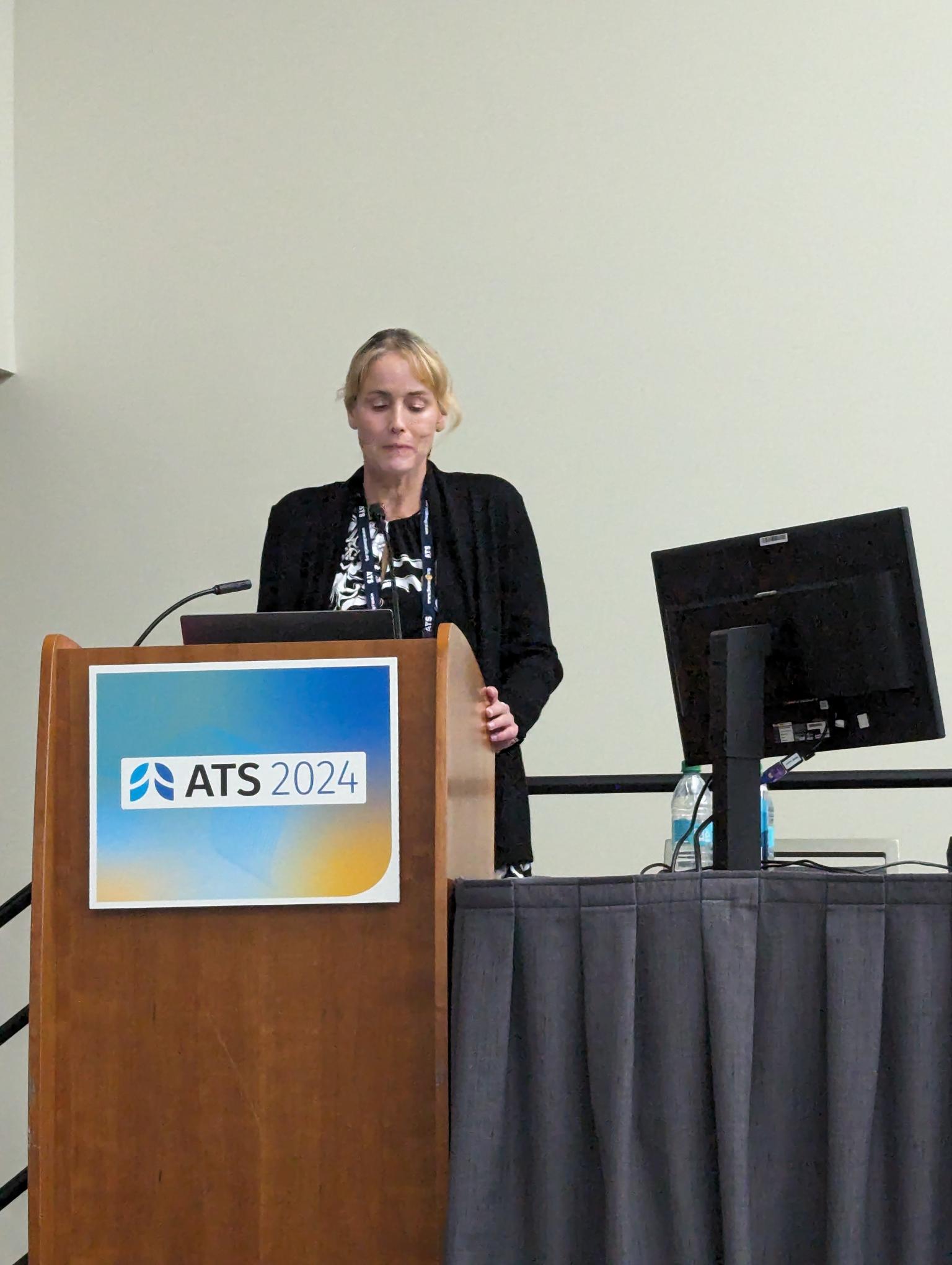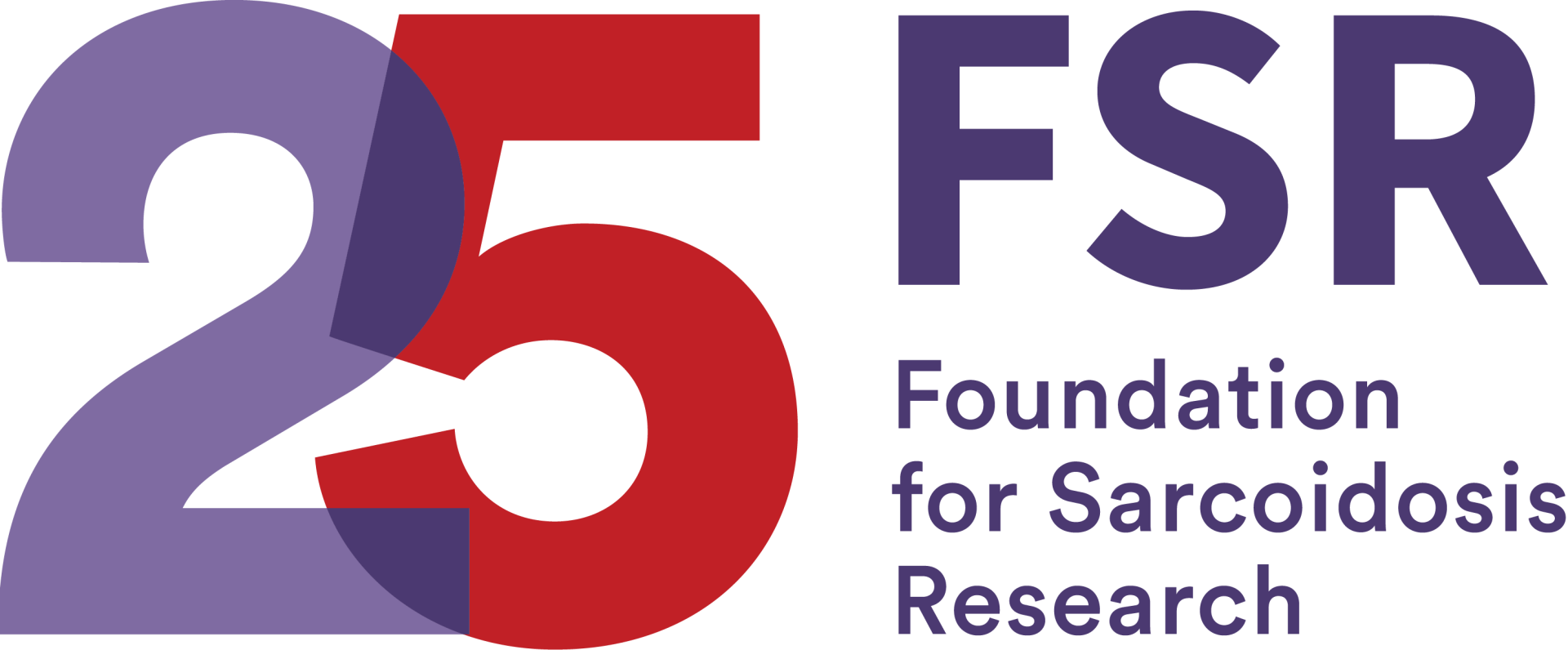My journey with neurosarcoidosis began on May 5, 2013, when I woke up in the morning with the worst headache of my life, light sensitivity, and double vision. After an evaluation by a neuro-ophthalmologist, a negative MRI, a Lumbar Puncture (which relieved my headache), and inconclusive blood work, I was diagnosed with a sixth cranial nerve palsy. For the next 6 weeks, I wore an eye patch so I could continue to work and travel.
Over the course of the next 4 months, my body became my enemy as I lost part of my hearing in my left ear due to sensorineural hearing loss (partially regained by intratympanic injections), and experienced dizziness, tinnitus, hyperacusis, sound sensitivity, trouble speaking and swallowing (I had to meet with a speech therapist to learn how to eat Jell-O), and vocal cord paralysis. I fainted once in the hospital lobby and experienced light sensitivity on and off. My symptoms would wax and wane and this all seemed to coincide with the steroids they prescribed me. My doctors were still unsure about my diagnosis until I started coughing (with a bad hacking cough) in front of my neuro-ophthalmologist, which made him think of neurosarcoidosis.
My doctor had already referred me to Mayo Clinic in Phoenix to confirm my diagnosis, so I decided to make the trip. Prior to traveling, I was off taken off steroids and had gone a bit downhill. I spent 2 weeks in Phoenix, during which I had endless amounts of tests, but my diagnosis of neurosarcoidosis was made based on a biopsy of my lung which showed noncaseating granulomas. CAT scans also revealed multiple lesions on my lungs, spleen, and liver.

By 2017, I was off steroids for about nine months, and off all my autoimmune drugs, and was doing better despite some challenges, when a horrible headache returned, and I wasn’t able to lift anything without it worsening my headache. Over the next 6 years, my life resembled much of what I went through in 2013-2017. We first had to try steroids to help, then went through different sparing agents this time. I wanted to go directly back to the sparing agent that helped before, but the doctors now had additional concerns about my immune system as I was developing frequent infections and viruses including Salmonella, E-Coli, Cellulitis, and rare viruses, including CMV in my colon. They found my Immunoglobulin G (IgG) levels were low in 2018, and I was placed on IgG therapy, which has helped me immensely. It took a while to find the right sparing agent but after input from a few neurosarcoidosis specialists, and even traveling to see them, Humira has been helping me to taper steroids.
Today, I take things one day at a time, I still experience fatigue, some cognitive issues, migraines, vestibular Issues, vision issues, infections, and some other symptoms, but I’ve come a long way and for that I am grateful. I’ve had a lot of support along the way from my family, friends, doctors and my care team, and the Foundation for Sarcoidosis Research.
Click here to learn more about neurosarcoidosis.
Click here to watch FSR’s webinar on neurosarcoidosis.

